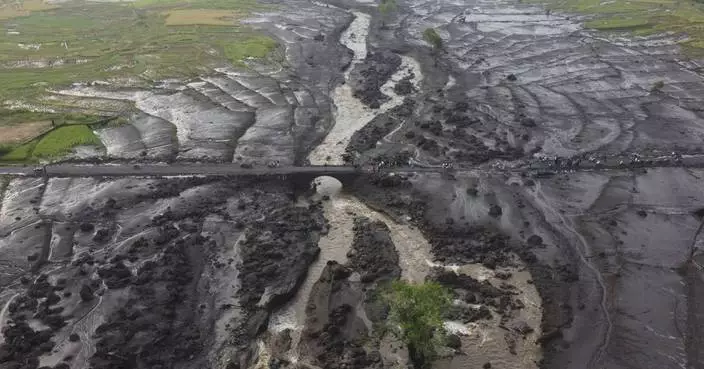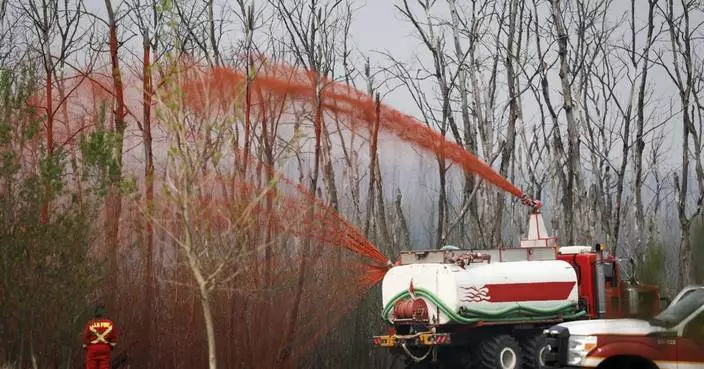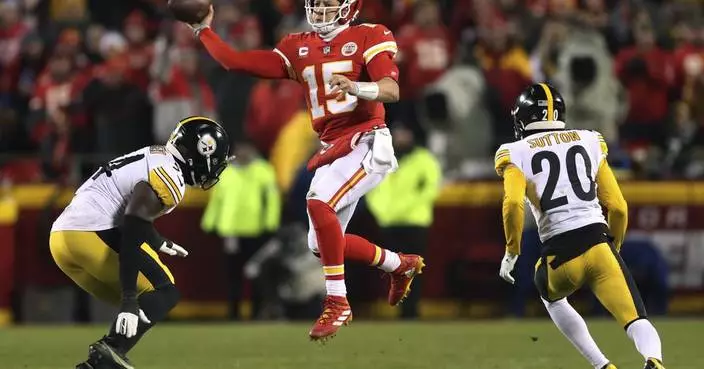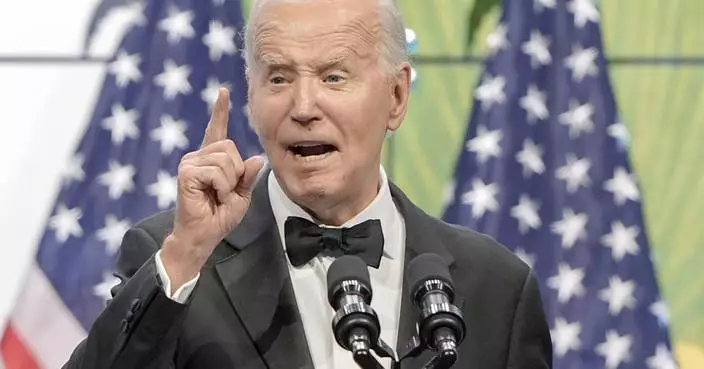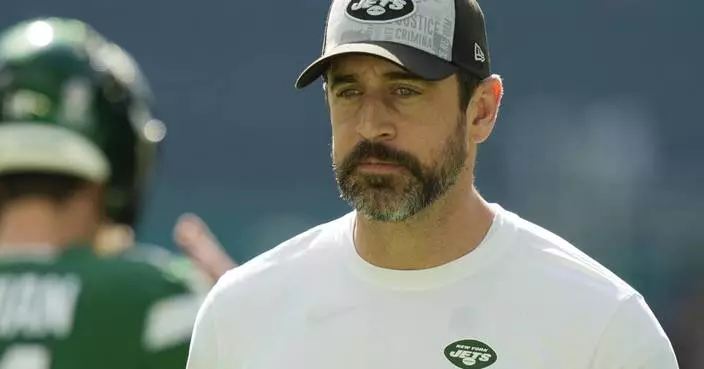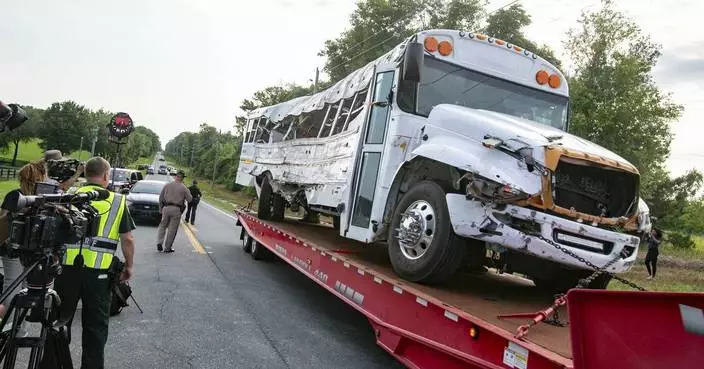PHOENIX (AP) — Minnesota coach Chris Finch has a ruptured patellar tendon in his right knee after a collision with Timberwolves guard Mike Conley in the fourth quarter of the team's playoff win over the Phoenix Suns on Sunday night.
Finch was helped off the court and later left the arena on a cart. The Timberwolves confirmed the nature of Finch's injury.
Conley was trying to dribble down the sideline when he collided with Suns star Devin Booker and ran into Finch. Conley tried to brace their fall, but Finch grimaced and immediately grabbed his right knee.
He was down for a few minutes, surrounded by Minnesota players, coaches and staff, before slowly getting up and being assisted off the court.
Minnesota beat the Phoenix Suns 122-116 to sweep the first-round series, advancing to the second round for the first time since 2004.
Assistant coach Micah Nori directed the team for the final 1:41. Nori said Finch was in the medical room getting checked out and that the team went down to see him after the game.
“He’s obviously in good spirits and so are the guys,” Nori said.
Conley said he didn't see Finch until the last moment and tried to hold him up following the collision. The veteran guard couldn't help but tell a joke or two at the coach's expense after the Game 4 victory.
“I told him to sit his (butt) down — he shouldn't be standing up like that late in the game," Conley said. "He's in the way. But prayers up for him, I'm sure he'll be fine.”
AP NBA: https://apnews.com/hub/NBA
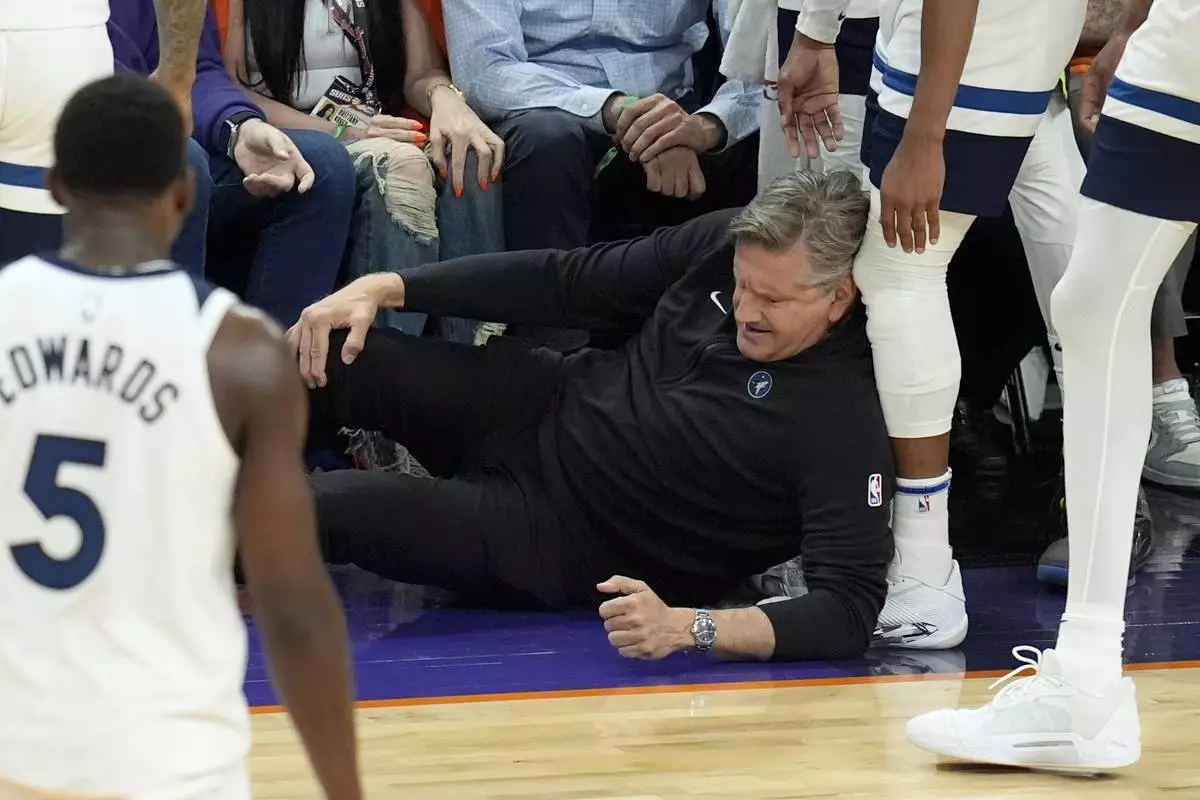
Minnesota Timberwolves head coach Chris Finch holds his knee after colliding with Timberwolves guard Mike Conley during the second half of Game 4 of an NBA basketball first-round playoff series against the Phoenix Suns Sunday, April 28, 2024, in Phoenix. The Timberwolves won 122-116, taking the series 4-0. (AP Photo/Ross D. Franklin)

Minnesota Timberwolves head coach hChris Finch calls times out during the second half of Game 3 of an NBA basketball first-round playoff series against the Phoenix Suns, Friday, April 26, 2024, in Phoenix. (AP Photo/Matt York)
Dawud Assad still has nightmares of the day Jewish militias attacked his village of Deir Yassin outside Jerusalem 76 years ago.
Assad, then 16, peered out his front window to see his village ablaze. As his uncles shot back at the militias firing upon them, Assad escaped. But more than 100 Palestinians, including women, children and elderly people, were killed in what is now referred to as the Deir Yassin massacre.
Assad lost 27 members of his extended family that day, including his grandmother and his two-year-old brother, Omar.
“I don’t know how I escaped,” Assad said. “They called me the living martyr.”
That massacre, other attacks on Palestinian villages, and the 1948 war surrounding Israel’s creation spurred what is called the Nakba, the Arabic word for catastrophe. It refers to the exodus of some 700,000 Palestinians who fled or were forced from what is now Israel.
Nakba remembrances have taken on new significance this year, as more than twice that number have been displaced within Gaza since the start of Israel-Hamas war, which was triggered when militants from Gaza attacked Israel on Oct. 7.
Even before 1948, a series of events and declarations paved the way for the traumatic event that would shape what Palestinians see as a decades-long struggle for justice and their right to return, something Israel has denied them.
“This process of displacement has been going on for over a century now,” said Beshara Doumani, a professor of Palestinian studies at Brown University.
Decades before 1948, Jews escaping antisemitism and persecution in Europe sought to establish a Jewish state in a place they considered their ancestral homeland. In November 1947, after World War II and the Holocaust, the U.N. General Assembly passed a resolution to partition Mandatory Palestine, controlled by the British, into two states – one Arab and one Jewish.
The majority of Palestinians and the wider Arab world rejected the resolution.
After Israel declared independence on May 14, 1948, and the departure of British forces, armies of neighboring Arab nations invaded, spurring the war.
Assad, who is now 92 and lives in Monroe Township, New Jersey, initially fled with others to the village of Ein Karem after escaping Deir Yassin.
Leila Giries, 84, remembers when people from Deir Yassin arrived in Ein Karem, bringing news of their escape. Fearing for their own safety, Giries’ family fled for what they thought would be a brief respite from the violence.
“We left everything. We walked out with the clothes on our back,” said Giries. “Everybody said in a couple of weeks, we'd be back."
Israel holds the Palestinians and Arab states responsible for the events of 1948 because they rejected the U.N. partition plan and declared war. It also notes that Palestinians who did not leave in 1948 are Israeli citizens.
Israel rejects the idea of a right of return because if it was fully implemented it would threaten its existence as a Jewish-majority state. And it notes that hundreds of thousands of Jews were forced out or fled Arab countries in the wake of Israel's founding and were absorbed by the newly independent country.
Israeli leaders have said the Palestinian refugees should be absorbed by neighboring Arab states or in a future Palestinian state. The fate of the refugees was a major point of contention in peace talks going back to the 1990s.
“The overwhelming majority of Palestinians became displaced after the Nakba, even if they didn’t leave Palestine,” said Doumani.
More Palestinians fled in the years after 1948, including during the 1967 Middle East war, when Israel captured the West Bank, east Jerusalem and Gaza. Some fled for a second time.
Many of the now six million Palestinian refugees and their descendants live in slum-like urban refugee camps in the West Bank and Gaza, as well as in Lebanon, Syria and Jordan. Others ended up outside the Middle East and built communities in places like Chile or the U.S.
Some Palestinians say the Nakba never ended because Israeli settlers have continued to encroach upon their land in the West Bank, sometimes engaging in violent actions. The international community considers Israeli settlements to be illegal.
As early as December 1948, a U.N. General Assembly resolution called for refugee return, property restitution and compensation, and proponents of the right to return see it as a human right protected by international law.
But that return never happened.
“The most important turning point was not the expulsion or the flight due to war conditions or massacres, but rather the decision not to allow them back,” said Doumani.
Giries, who now lives outside Los Angeles, still has the key to her family’s home, though the building itself is no longer there. The key has become a symbol for her — of the home lost during the Nakba and her inability to return.
To be Palestinian, she said, is to have a fractured identity. She remembers coming to the U.S. as a teenager and being told there was no such thing as “Palestine.”
“Okay, so there is no such thing as Palestine. How do you account for me?” said Giries.
The refugees and their descendants make up around 75% of Gaza’s population.
Hamas killed some 1,200 people and took another 250 hostage during its Oct. 7 attack. Israel responded with one of the heaviest military onslaughts in recent history, killing more than 35,000 Palestinians, according to Gaza's Health Ministry.
Families in Gaza have been forced to evacuate to different locations numerous times in the last seven months after receiving warnings from the Israeli military, and tens of thousands of people now live in tents. Israeli officials say the evacuations are aimed at sparing civilian life as they combat Hamas fighters.
But many in Gaza say they have nowhere to go, with entire neighborhoods destroyed. The fear now is if Palestinians leave Gaza altogether, they, like those who were forced to leave in 1948, will never be allowed to return.
“I keep telling my kids I'm glad that my parents are not alive to see another Nakba,” Giries said.
For Assad, the images of children killed or maimed by Israeli airstrikes in the last several months take him back to the sight of his lifeless two-year-old brother in 1948.
“What did they do? Why did they have to die, small ones like this?,” he said.
Across the Middle East, Palestinians are marking the Nakba with their eyes on the war in Gaza. Demonstrations and educational events are planned.
In Chile, which has what is considered the largest Palestinian community outside the Middle East, events and actions that highlight the Nakba will take place throughout May.
There are events planned across the U.S., too. In Washington, D.C., a group of federal employees gathered outside the White House on Wednesday for a “day of remembrance” and to protest the U.S. government's backing of the Israeli military's offensive in Gaza. A rally is planned for Saturday on the National Mall.
Protesters in Chicago commemorated the Nakba during a rally last weekend, and in Paterson, New Jersey, which holds one of the largest Palestinian communities in the U.S., organizers are holding an annual “Palestine Day on Palestine Way” event on Sunday.
Associated Press reporter Nayara Batschke in Santiago, Chile, contributed.

Dawud Assad, 92, stands in front of Palestinian decor in his home in Monroe Township, N.J., on May 11, 2024. (AP Photo/Noreen Nasir)
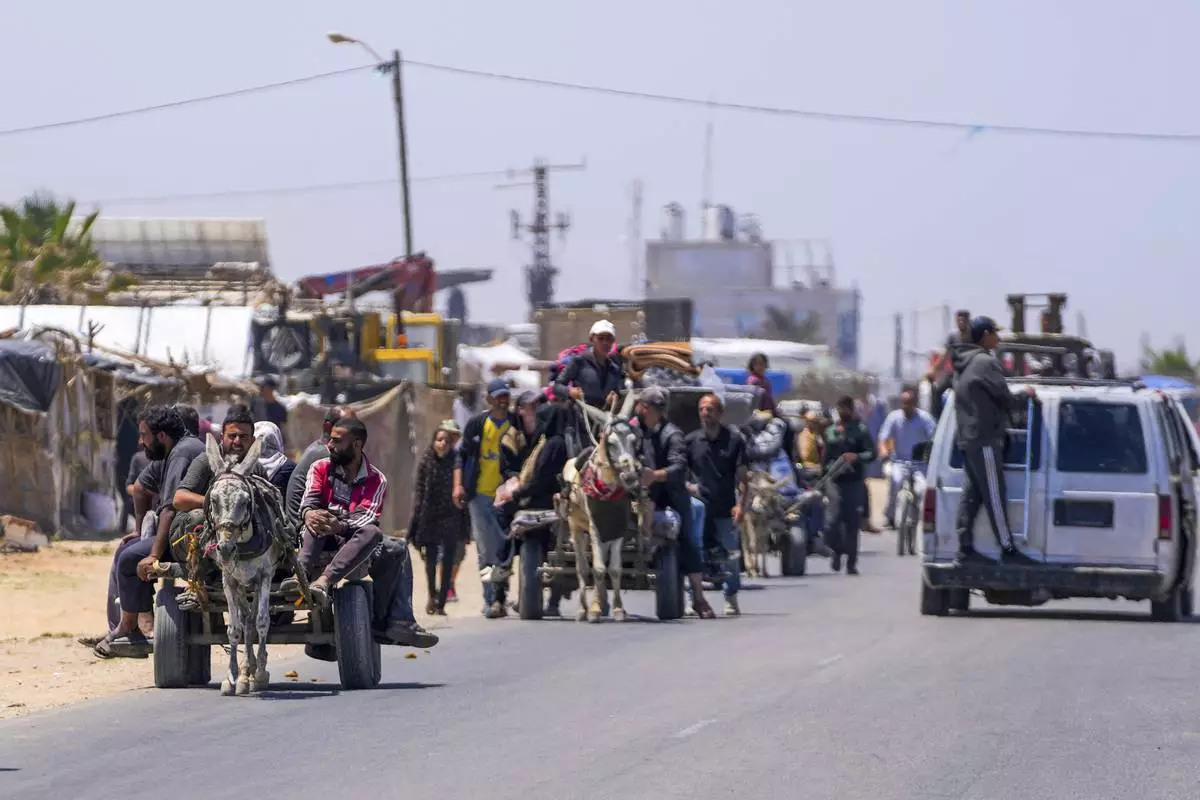
FILE - Displaced Palestinians arrive in central Gaza after fleeing from the southern Gaza city of Rafah in Deir al Balah, on May 9, 2024. (AP Photo/Abdel Kareem Hana, File)

FILE - Displaced Palestinians arrive in central Gaza after fleeing from the southern Gaza city of Rafah in Deir al Balah, on May 8, 2024. (AP Photo/Abdel Kareem Hana, File)

FILE - Palestinian villagers who fled from their homes during fighting between Israeli and Arab troops, on Nov. 4, 1948. (AP Photo/Jim Pringle, File)
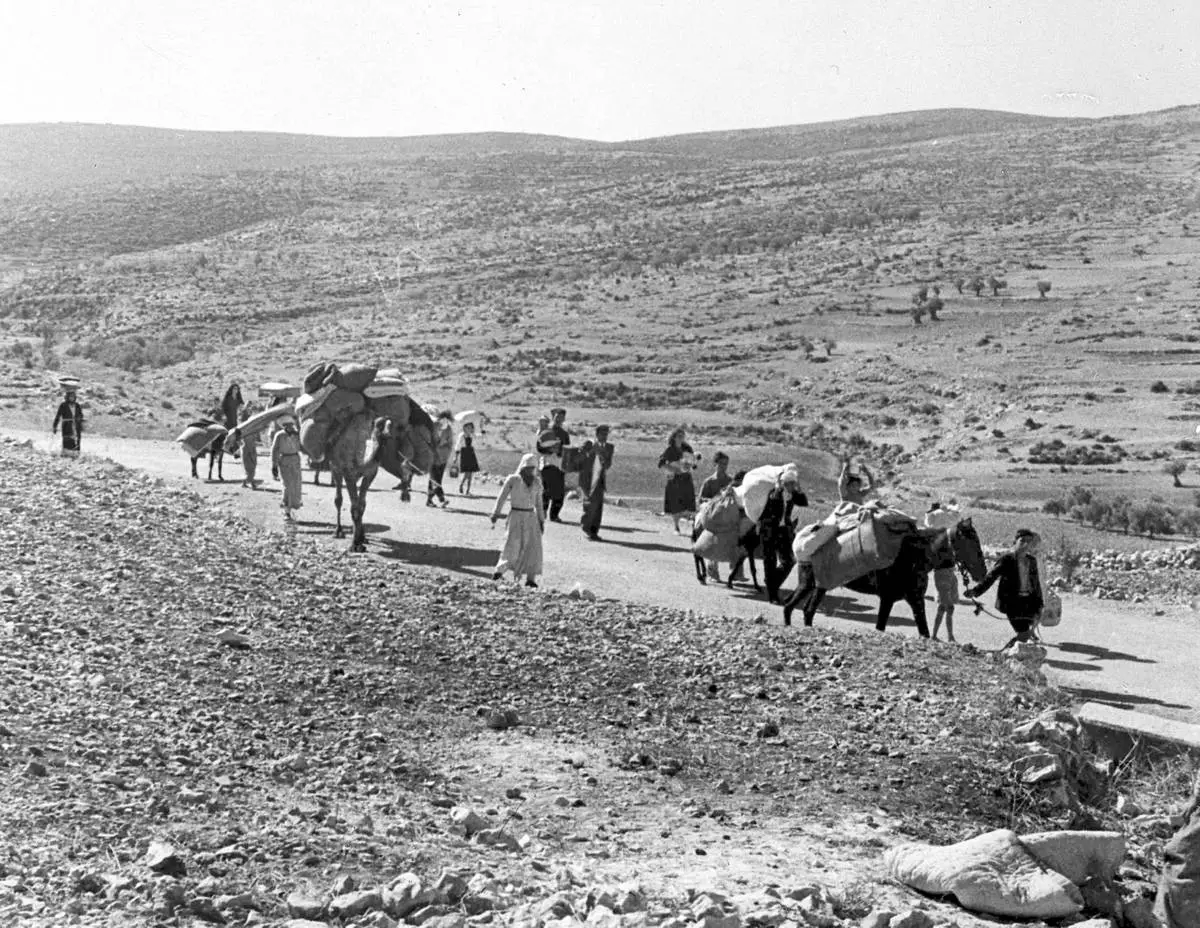
FILE - A group of Palestinian refugees walk along the dusty road from Jerusalem to Lebanon, carrying their children and belongings with them, on Nov. 9, 1948. (AP Photo/Jim Pringle, File)

Dawud Assad, 92, stands in front of Palestinian decor in his home in Monroe Township, N.J., on May 11, 2024. (AP Photo/Noreen Nasir)











